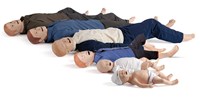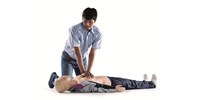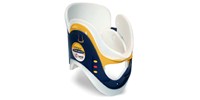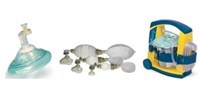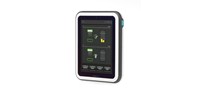Sudden Cardiac Arrest in Athletes
Although rare, unexpected death in healthy young individuals has great consequences for those involved and often raises public attention. This is even more so when it happens to well known athletes. The largest available studies estimate the risk among high school and collegiate athletes in the US to be between 1 per 100,000 and 1 per 300,000 each year(1).
The earliest documented case of sudden cardiac death is Pheidippides (490BC); the Greek that collapsed after running the first marathon. Since then a number of cases have been reported. Below are some of the most known:
- 1998 Bjørn Stenersen, Professional cyclist
- 1995 Sergei Grinkov, Olympic gold medal scater
- 1993 Reggie Lewis, Proffesional basketball player
- 1986 Flo Hyman, Olympic volleyball champion
Primarily there are two causes for sudden cardiac death amongst athletes (2) :
Screening, through individual testing, can possibly identify the first group, but this is both uncertain and expensive to implement widely. Therefore such screening is not included in a normal health check.
The second group of cardiac arrest victims is a result of sports including physical contact. Baseball, Hockey, Handball, Soccer, etc. A number of possible proactive measures have been evaluated, some implemented, but this is unlikely to reduce the risks significantly.
Recently it was demonstrated, beyond question that the chain of survival approach can effectively bring back the victims of cardiac arrest in the Ståle Solbakken case. Ståle Solbakken, who is a soccer player for the Norwegian national soccer team, was brought back to life after suffering from cardiac arrest during training with his club in Copenhagen.
There is a good chance that athletes collapsing with sudden cardiac arrests are witnessed, and thus they are likely to get immediate attention. "Time without treatment" is a cardiac arrest victim's worst enemy, and the chance of survival is reduced with approximately 10% per minute(3) of delayed treatment. Ståle Solbakken got immediate attention and CPR was started without delay. Emergency personnel came within a few minutes and delivered lifesaving electric shocks, also known as defibrillation. After two shocks Ståles heart started beating again, and he is now out of the hospital on his way to full recovery.
Sudden Cardiac Arrest(SCA) in sports is a reality and little can prevent this from happening. The first hurdle to overcome in order to increase likelihood of survival is to accept that this is a problem, and that something needs to be done about it. This raises the question of what measures can be taken to be prepared. There is an increasing awareness at sports arenas that SCA is one of the injuries/emergencies that the response teams need to prepare for. A part of being ready is to have an AED on site to be able to give lifesaving electroshocks without delay.
We recommend further reading on this subject in articles published in:
- The new England Journal of Medicine June 1998
- Postgraduate Medicine October 2000
- The Physician and Sports Medicine November 2000
- American Heart Association 70th scientific sessions
(1) Van Camp SP, Bloor CM, Mueller FO, et al. Nontraumatic sports death in high school and college athletes. Med Sci Sports Exerc 1995;27(5):641-7
(2) Maron BJ. Cardiovascular risks to young persons on the athletic field. Ann Intern Med 1998
(3) American Heart Association. Guidelines 2000 for Cardiopulmonary Resuscitation and Emergency Cardiovascular Care

 USA
USA
